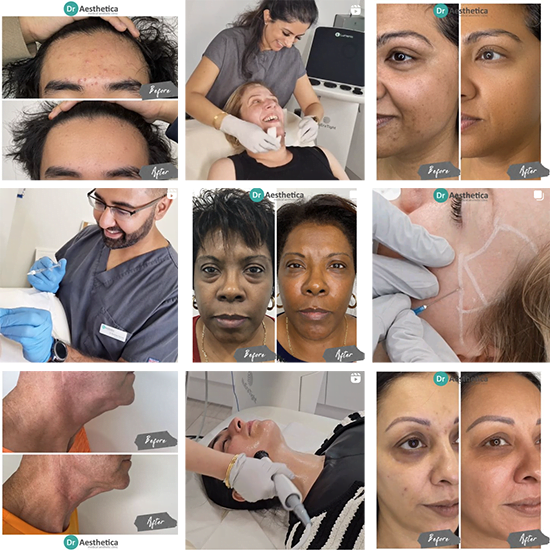Before we look at how you can treat chronic migraines with Botox, we need to answer one question. What type of headache do you have? Is it a tension headache or a migraine? It's very important we differentiate the two.
A tension headache is the most common type of headache and is what most people call "the normal everyday headache". Almost everyone has experienced a tension headache at one time or another. In fact, most of us have tension headaches now and then, and they go away within a few hours.
The main symptom of a tension headache is usually a feeling of tightness or pressure on both sides of the head. While the cause of tension headaches is not clear, they are often attributed to stress, anxiety or eyestrain.
Migraines, while not as common, tend to have much more pronounced symptoms. For example, vomiting, nausea and vomiting often accompany migraines. Typically, a migraine will start with a dull ache that progresses to a throbbing pain. Another common symptom is sudden sensitivity to light, sounds and smells. The duration, intensity and symptoms vary from person to person.

What Makes a Migraine Chronic?
Migraine headaches can either be episodic or chronic. In typical episodic migraine, several weeks or even months may pass between attacks. With chronic migraine, the headaches occur at least 15 days a month, with at least 8 days of severe headache with migraine symptoms.
Because of the severity of the symptoms, migraine sufferers are often absent from work or school for significantly longer periods of time, which can greatly affect their productivity. In addition, the more than 15 migraine days must occur longer than three months to be termed a chronic migraine.
Sadly, medical researchers are yet to offer defined answers to the question of why people suffer from migraines and why they increase in intensity and frequency over time.
Some theories that seek to explain the causes of chronic migraines include:
- If a close family member has experienced migraine headaches, you are likely more susceptible to migraines.
- Chemical imbalances in the brain
- Vascular irregularities in vessels to or inside your brain
- Traumatic brain injury
What triggers a migraine?
Often a migraine is caused by "triggers" - factors such as certain reactions, substances or environments that can set off a new migraine attack. These can include:
- Emotional stress - some people find that their migraines erupt when they are stressed or worried.
- Hormones - as women experience hormonal changes due to their menstrual cycle, they are often more prone to migraines during this time.
- Sensory simulation - flashing lights, loud music or strong smells can stress the sensory organs and trigger a migraine attack.
- Weather changes - temperature or humidity changes can trigger migraines in some people.
It is important to know that triggers are different for each person and that no two people react in the same way to a trigger.
Also, medical researchers are yet to offer defined answers to the question of why people suffer from migraines and why they increase in intensity and frequency over time.

Some theories that seek to explain the root causes of chronic migraines include:
- If a close family member has experienced migraine headaches, you are likely more susceptible to migraines.
- Chemical imbalances in the brain
- Vascular irregularities in vessels to or inside your brain
- Traumatic brain injury
How to Reduce Chronic Migraines?
Below are steps you can take to reduce the frequency and intensity of chronic migraines.
- The pain caused by migraines gets worse the more physically active you are - so it may help to lie down for a while.
- Identify and avoid your most common migraine triggers. If eating certain foods often triggers migraines, it's best to avoid those foods.
- Migraines, like tension headaches, are associated with stress. Lifestyle changes that promote lower stress levels can not only help relieve chronic migraines but are also good for your health in general
- Depending on the underlying course of the migraine, your doctor may recommend certain medications to help relieve the severity of the migraine symptoms.
- Botox is fast becoming a popular alternative for treating some cases of chronic migraine.
- In some cases, chronic migraines go away on their own, and never return or turn into episodic migraines.
How Botox is Used To Treat Chronic Migraines
Botox is often referred to as the "anti-ageing miracle drug", but its use is not limited to cosmetic goals. At Dr Aesthetica, in addition to successfully treating chronic migraines with Botox, we have also had excellent results with our Botox treatments for bruxism (painful teeth grinding), neck lifts and hyperhidrosis (excessive sweating). As you can see, Botox is suitable for more than just removing wrinkles. Several studies have shown that Botox can significantly reduce the frequency of chronic migraine headaches, with few and mild side effects.
But exactly how does Botox alleviate symptoms of chronic migraines?
Botox is injected into strategically mapped out injection sites on the head. Over time it blocks the neurotransmitters that transmit pain signals from the brain to the nerve endings in the head and neck. This effectively stops the pain caused by chronic migraines. Many people have reported that their migraine days have been reduced by more than 50% after a Botox injection.
Are you interested in learning more about our Botox Treatment for Chronic Migraines? Please speak to one of our friendly staff today!


